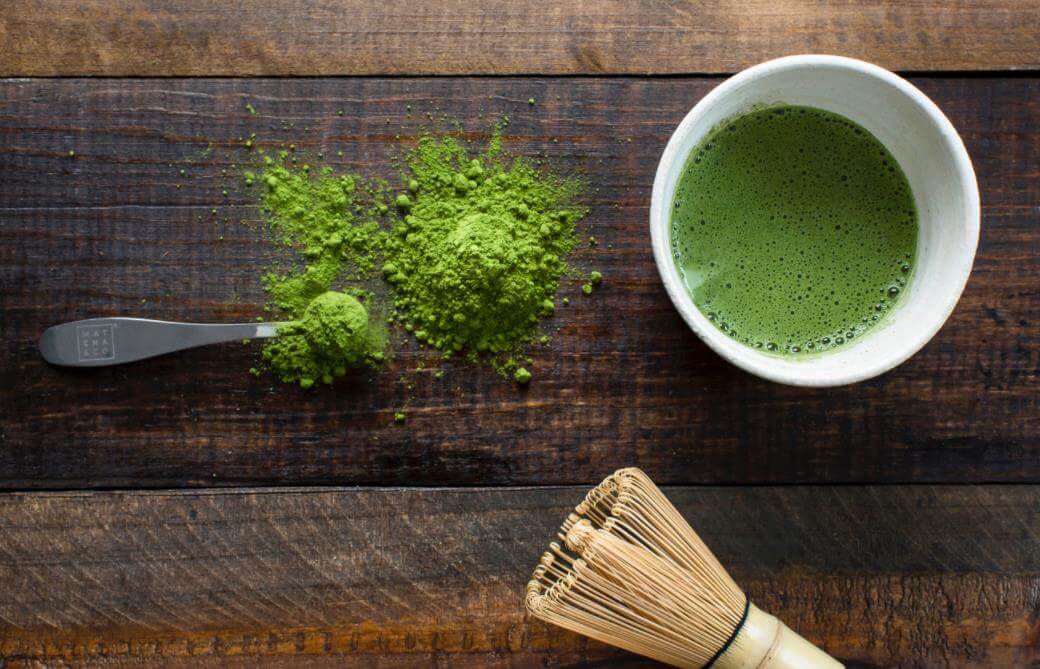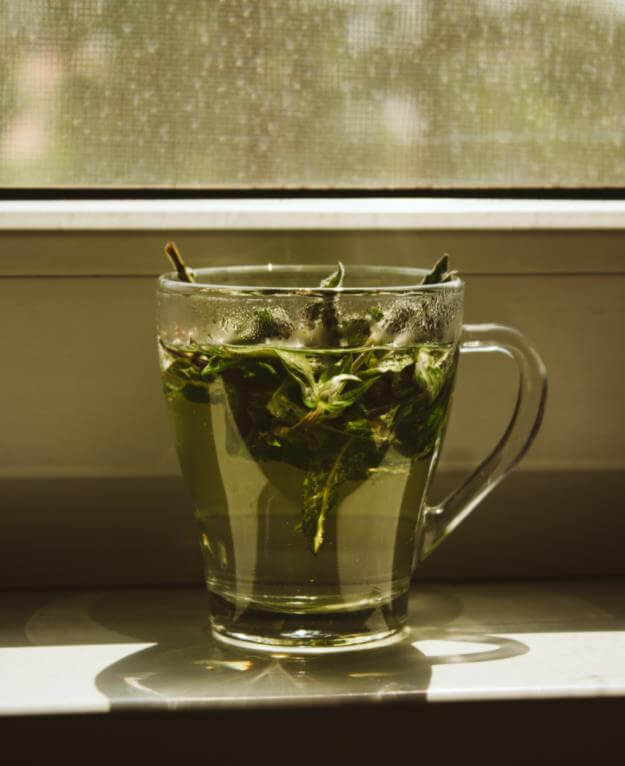Natural and organic products are often the best and safest treats one can give the skin. And for ages, green tea, found initially in China, has proven to be of immense benefits.
Whether your skin is glossy and silky-smooth or you are battling perennial acne that has refused all treatments, this ancient plant has more therapeutic properties than you probably know.
Recent research
postulates that green tea contains polyphenolic compounds called epigallocatechin-3-gallate (EGCG), which has multiple therapeutic capabilities. These
healing properties
include the fight against cancer, inflammation, diabetes, myocardial infarction, and
atherosclerosis
.
If you have been searching for a non-synthetic approach to keep your skin aglow or fight common body infections, I congratulate you for finding this article. In this article, you will learn all the benefits your skin and hair can derive from this caffeinated natural drink and how to exploit them.
However, for the sake of starters, let’s begin by describing what green tea is.

What is Green Tea?
Green tea
stems from a plant called Camellia sinensis, which originated in China but is now rampant in many Asian countries. The tea is prepared from the unwithered and unoxidized buds and leaves of that tree and gives a characteristic green color after preparation.
Since there are different species of Camellia sinensis, there are also slight variations of green teas, although all contain two critical therapeutic components – theanine and catechins. The other reasons green teas have slight variations include the method used for their cultivation, when harvested, and the production processing.
Benefits of Green Tea for the Skin
Beyond the therapeutic properties of green tea, it has many benefits for the skin. Here are five such uses:
-
Fights Against Skin Cancer
Fewer illnesses are as feared today as cancer. But did you know that green tea can significantly reduce your chances of skin cancer if used appropriately? Yes, it can. That’s possible because of some antioxidants present in this plant.
Antioxidants are chemical-like substances that help to eliminate free radicals in the body. These free radicals are toxins that have found their way into our system through what we eat and our polluted environment. Without removing them, they can tamper with cellular growth, resulting in malignancy.
Green teas have polyphenols and several catechins, of which EGCG and ECG are the most potent.
Research
reveals that these two catechins play an active role in the repair of DNA damaged by the sun’s UV rays, thereby preventing skin cancer.
-
Resolves Acnes
Acne
clogs the skin’s pores with hair follicles and oil from the sebaceous gland. The result is pimples, blackheads, and breakouts on the skin (usually on the face).
Several findings have confirmed that the polyphenolic compounds in green tea can limit sebum secretion, thereby addressing the problem of acne. Besides, polyphenols are antimicrobials, helping to deal with bacteria and other pathogens that may worsen acne.
-
Combats Skin Irritation and Redness

Skin irritation can come from abrasions, cuts, sunburns, or bites from an insect. Green tea can soothe all these irritations thanks to its anti-inflammatory polyphenols. It works well also for itching when applied topically.
-
Moisturizes the Skin
Do you have dry, flaky skin that does not respond to creaming? Green tea might be the rescuer you should know. The skin needs vitamin E and other things to keep it hydrated and nourished; green tea has this vitamin in abundance.
Applying green tea to your daily beauty regimen can long-lastingly resolve your skin roughness issue, as
this research
suggests.
-
Delays Skin Aging
Looking youthful is the wish of all of us, regardless of what our birth certificates say. But because of several factors, our cells tend to age quicker than usual, causing us to look old.
Green teas, as noted earlier, have abundant vitamins, one of which is B2, responsible for making us look young. Also, the ECGC present in green teas quickens and rejuvenates dying cells, causing otherwise dull-looking skin to look more radiant.
How Green Tea Benefits the Hair
Besides glowing skin, hair is another beauty-defining factor. And just like green tea tremendously benefits your skin, it does the same to your hair if used correctly.
Let’s quickly run through some exciting benefits of this ancient plant to your hair.
-
Green tea helps restore healthy lines to your weak-looking hair because of its vitamin E and other hair-nourishing nutrients.
-
Use green tea leaves to fight dandruff and other itchy, flaky hair conditions capable of causing severe hair loss.
-
If you are losing your hair, green tea’s caffeine can help block the hormone (DTH) that often causes this condition and stop any further depletion of your hair. Besides halting hair loss, it also aids in speedy hair regrowth, thanks to abundant vitamins.
-
One natural way to fix an oily scalp is to try green teas. It helps to manage the oil released from the sebaceous gland and fight infections.
Green tea sure has tremendous benefits for both the hair and the skin. But can it also help in skin whitening? Let’s answer this question.
Can Green Tea Help Whiten the Skin?
Green tea helps whiten or lighten the skin
better than formulated creams. Why and how is this possible? Here is the reason.
Remember, I pointed out earlier that green tea contains Epigallo-3-Catechin-Gallate or EGCG. This compound inhibits an enzyme called tyrosinase, which mediates the production of melanin that imparts color to the skin. When tyrosinase can no longer function as usual, the skin becomes lighter or whiter.
But apart from
tyrosinase inhibition
, the phytochemicals present in green tea also combat free radicals that cause the skin to age or look dull. So this detoxification process alone can significantly change a person’s skin outlook besides the whitening effects of the polyphenols.

How to Use Green Tea to Benefit the Skin and Hair
Given all the undeniable benefits green tea affords, I’m sure you are itching to know how to use it appropriately. In this section, I will highlight the effective way to get the best out of this leaf.
There are two ways to use this ancient leaf for your benefit: oral ingestion and topical application. But what exactly do these terms mean? I will explain.
Oral ingestion means taking the tea through your mouth. Most people
brew it at home
and take a cup for oral ingestion daily. The parts of the plants are the leaves and stems.
Let me warn you that green tea is not for the faint-hearted; It can be bitter unless you brew it not to be. In that case, you may only be getting some of the benefits.
How to Make Green Tea at Home
I will assume you have access to this plant’s leaf or stem. If this assumption is correct, follow these simple steps to brew your green tea yourself.
-
Wash the leaves and stem thoroughly to be sure they are free from dust and surface germs.
-
Boil water to about 50°C and pour a few quantities into a mug containing these leaves. It would help if you allowed the water to cover the leaves for optimum simmering.
-
Cover the mug or container containing the mixture and wait an hour to collect the water.
Precautions
For optimal results, do not use boiling water; It only has to be warm. If you use water at 100°C, the resulting tea may be too bitter for you to drink, and the phytochemicals would most likely have been degraded.
Similarly, avoid adding sweeteners or additives to the tea to enjoy all the benefits mentioned earlier. With sweeteners, you will only be taking a beverage that may not achieve your desired aims as quickly and efficiently as you would want.
Several findings point to the fact that green tea works best when you drink it in the morning after your meal. Drinking it on an empty stomach is not advised, and once taken, you should abstain from eating anything until a few hours later.
Drink green tea with caution if you’re pregnant or breastfeeding. It’s essential to cross-check with your physician to double-check that it is a good choice at such a time.
Finally, you should avoid overdrinking this tea because you want to achieve your aim quickly. However, studies have yet to prove that you can speedily achieve your goal by excessively drinking green tea. Instead, you risk developing stomach upsets and getting intoxicated by the caffeine in the leaf.
Topical Application of Green Tea to the Skin and Hair
If you have issues with your skin or hair,
applying green tea
directly on the spot would be best to get the work done. Make a mask with this leaf for acne and other skin disturbances to stay on the site overnight or for at least 30 minutes.
Here are three different ways to make a green tea mask for your skin or hair
-
Blend the leaf or stem with little water until everything homogenizes. Apply this mixture to your clean face and allow it to stay for at least 30 minutes before you wash it off.
-
Brew your green tea as described earlier and allow it to cool down. Next, add half a teaspoon of honey to the cooled tea and apply it directly to your face, hair, or other areas of interest.
-
Get a small quantity of baking soda, mix it with the extracts from the leaf or stem and apply it to the area. Since people react to baking soda differently, you should confirm that you are tolerant of it before adopting this style.
Best Green Tea for the Skin
Many people opine that Jasmine’s green tree contains more phytochemicals than others, making it the most preferred for the skin. However, any green tea will do just fine since all contain catechins to a degree.
If you have a unique skin need that you want to address, you may shop for the green tea option that contains more nutrients that will help. For instance, if your goal is to slow down aging, you should shop for green teas with abundant antioxidants. But, again, you can choose from your local pharmacy or online store.
Bottom Line
Green tea has a lot of benefits for your skin and hair, and it represents an inexpensive and natural way to look your best at all times.

 By myulikeadmin
By myulikeadmin




